
How to Use APDS-9960 RGB and Gesture Sensor: Examples, Pinouts, and Specs
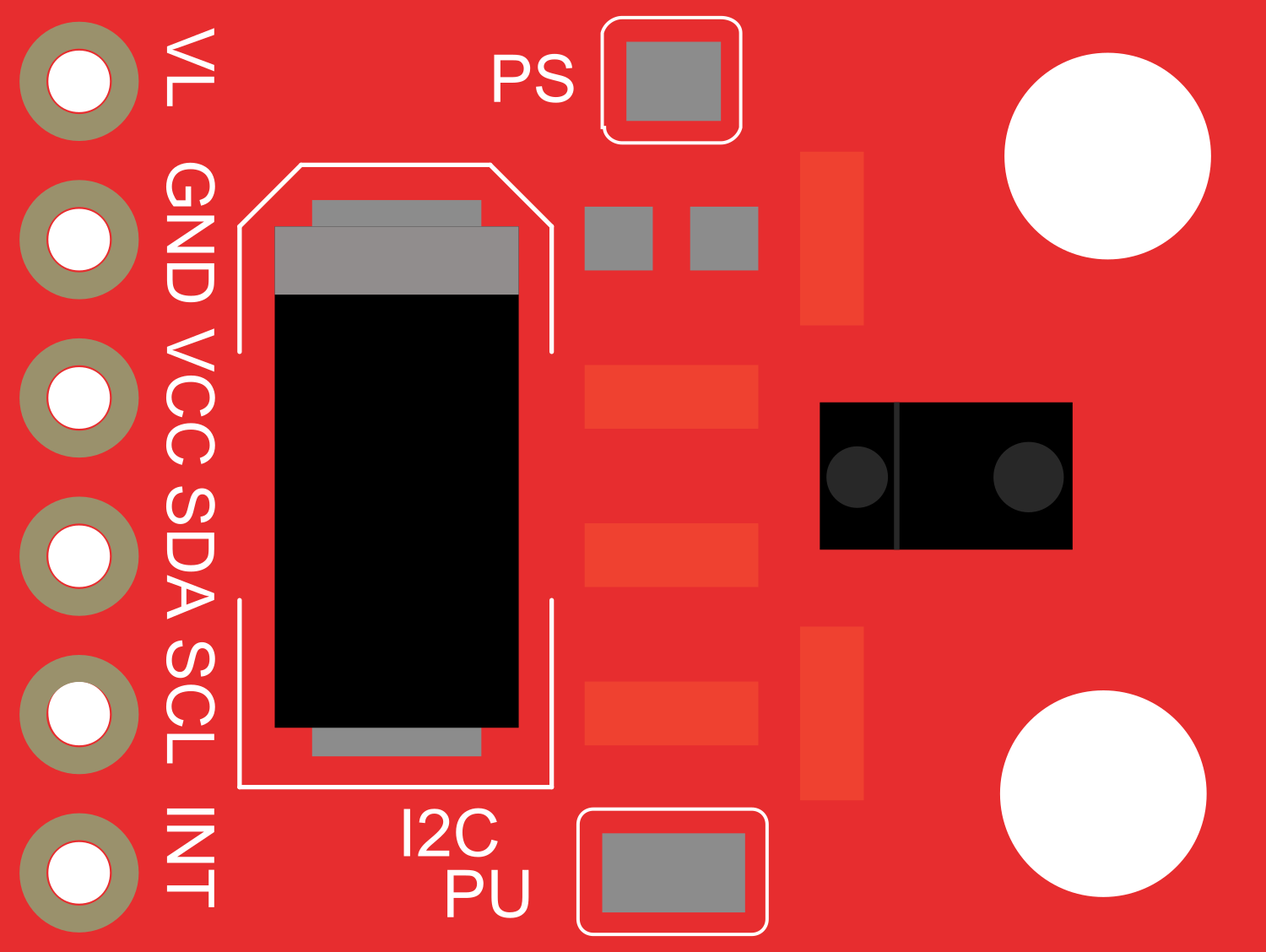
 Design with APDS-9960 RGB and Gesture Sensor in Cirkit Designer
Design with APDS-9960 RGB and Gesture Sensor in Cirkit DesignerIntroduction
The APDS-9960 RGB and Gesture Sensor is a versatile sensing device that offers advanced gesture detection, ambient light sensing, proximity sensing, and color sensing capabilities. This sensor is widely used in applications such as touchless control systems, light color temperature measurement, and mobile device screen brightness adjustment based on ambient conditions. Its ability to detect simple gestures like swipes and taps makes it ideal for interactive projects and user interfaces.
Explore Projects Built with APDS-9960 RGB and Gesture Sensor
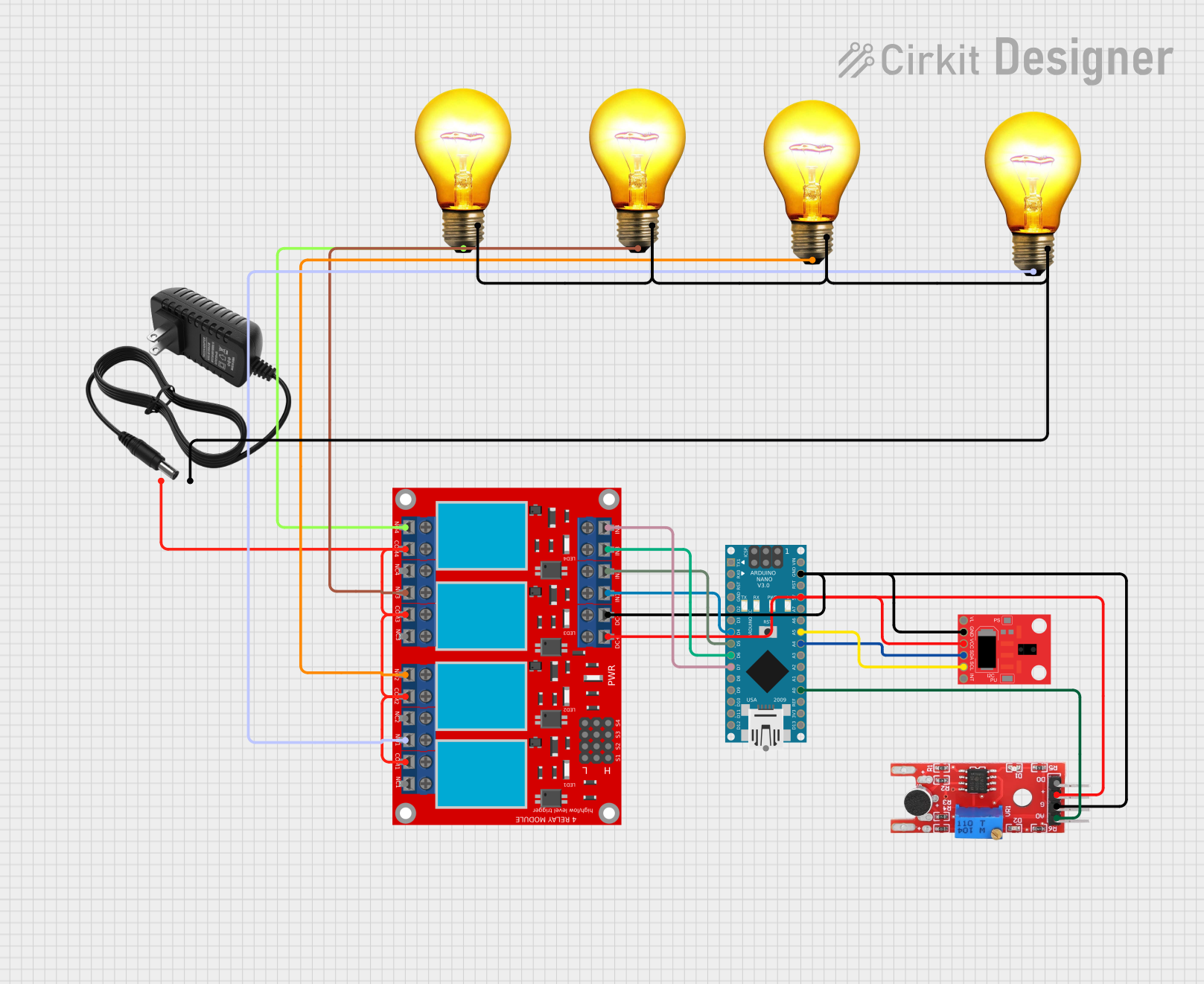
 Open Project in Cirkit Designer
Open Project in Cirkit Designer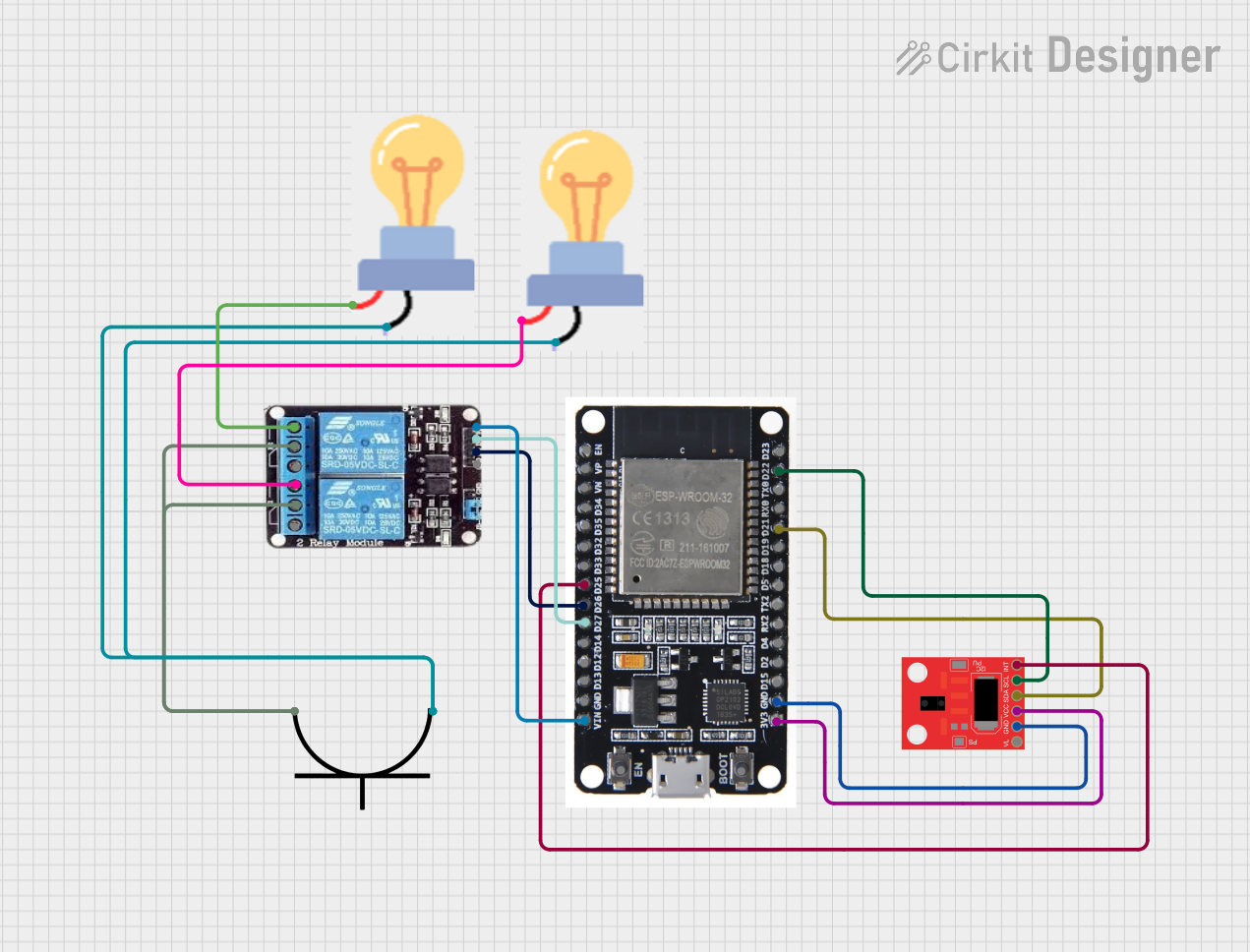
 Open Project in Cirkit Designer
Open Project in Cirkit Designer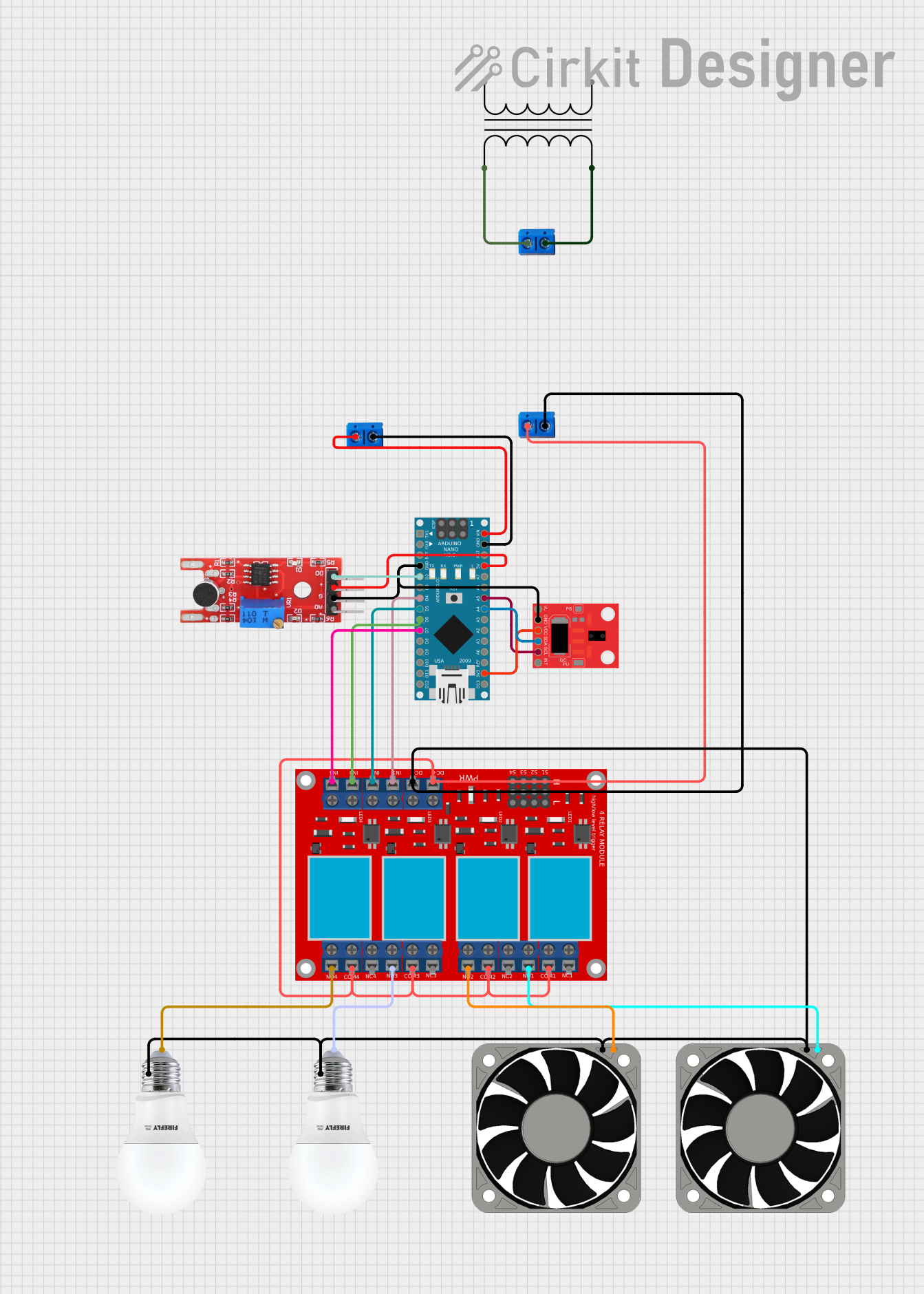
 Open Project in Cirkit Designer
Open Project in Cirkit Designer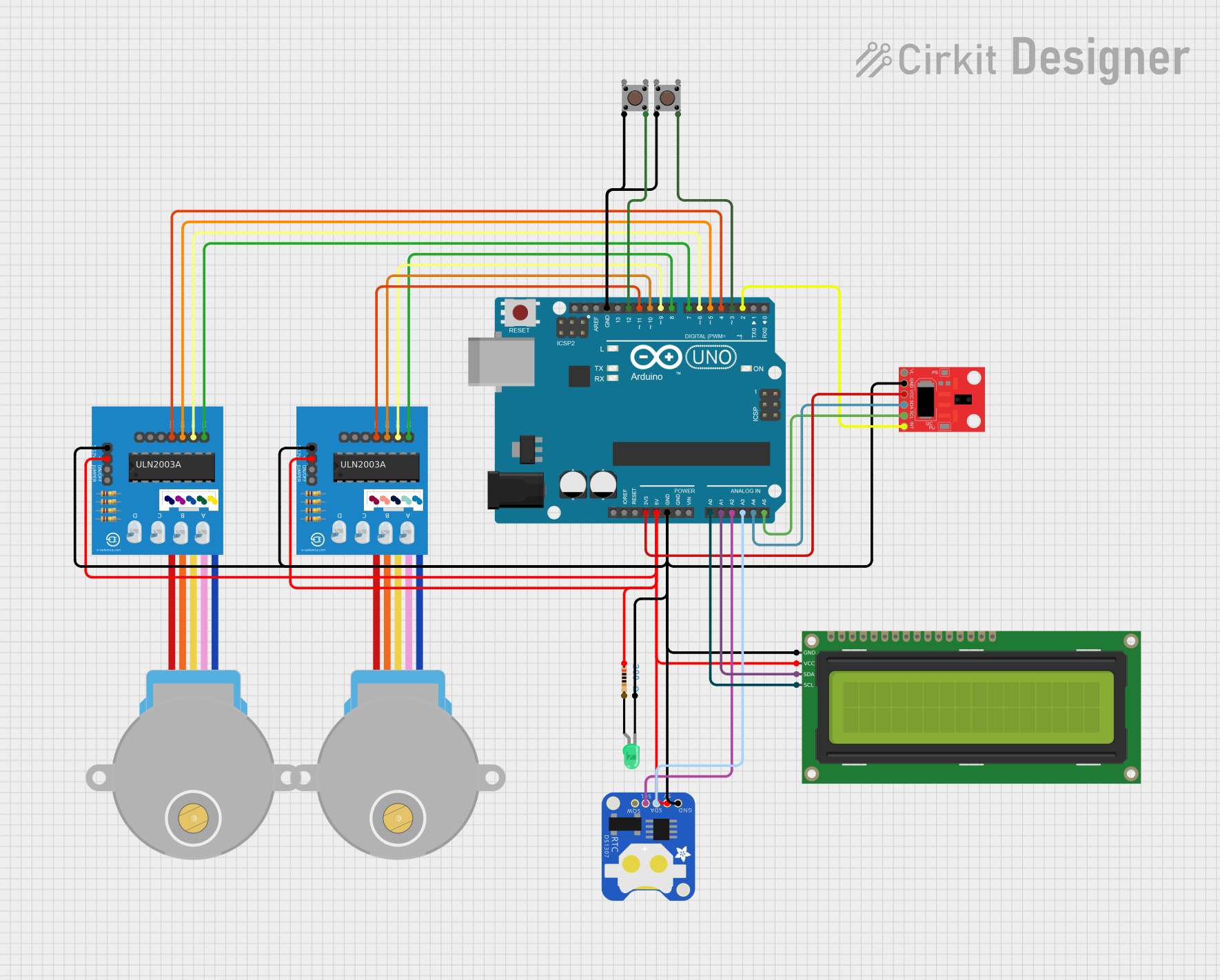
 Open Project in Cirkit Designer
Open Project in Cirkit DesignerExplore Projects Built with APDS-9960 RGB and Gesture Sensor

 Open Project in Cirkit Designer
Open Project in Cirkit Designer
 Open Project in Cirkit Designer
Open Project in Cirkit Designer
 Open Project in Cirkit Designer
Open Project in Cirkit Designer
 Open Project in Cirkit Designer
Open Project in Cirkit DesignerTechnical Specifications
Key Technical Details
- Operating Voltage: 2.4V to 3.6V
- Supply Current: 100 μA (typical)
- Proximity Detection Range: Up to 10 cm
- Ambient Light Sensing Range: 0.01 lux to 64,000 lux
- I2C Interface: 400 kHz (fast mode)
- Interrupt Driven: Yes, with programmable upper and lower thresholds
- Operating Temperature Range: -30°C to +85°C
Pin Configuration and Descriptions
| Pin Number | Name | Description |
|---|---|---|
| 1 | VDD | Power supply (2.4V to 3.6V) |
| 2 | GND | Ground connection |
| 3 | SDA | I2C Data Line |
| 4 | SCL | I2C Clock Line |
| 5 | INT | Interrupt output (active low) |
| 6 | VL | Optional IR LED power supply for proximity sensor |
Usage Instructions
Integration with a Circuit
- Power Connections: Connect VDD to a 3.3V supply and GND to the ground on your circuit.
- I2C Connections: Connect SDA and SCL to your microcontroller's I2C data and clock lines respectively.
- Interrupt (Optional): Connect the INT pin to an external interrupt on your microcontroller if you wish to use interrupt-driven measurements.
- IR LED Power (Optional): If additional IR LED power is required for proximity sensing, connect VL to a power source as per the LED specifications.
Best Practices
- Use pull-up resistors on the I2C data and clock lines.
- Keep the sensor away from direct sunlight or other strong light sources that may interfere with readings.
- Avoid placing objects too close to the sensor to prevent false proximity readings.
- Ensure that the sensor is mounted securely and is not subject to mechanical vibrations.
Example Code for Arduino UNO
#include <Wire.h>
#include <SparkFun_APDS9960.h>
// Instantiate APDS9960 object
SparkFun_APDS9960 apds = SparkFun_APDS9960();
void setup() {
Serial.begin(9600);
Wire.begin();
// Initialize APDS-9960 (configure I2C and initial values)
if (apds.init()) {
Serial.println("APDS-9960 initialization complete");
} else {
Serial.println("Something went wrong during APDS-9960 init!");
}
// Start running the APDS-9960 gesture sensor engine
if (apds.enableGestureSensor(true)) {
Serial.println("Gesture sensor is now running");
} else {
Serial.println("Something went wrong during gesture sensor init!");
}
}
void loop() {
if (apds.isGestureAvailable()) {
switch (apds.readGesture()) {
case DIR_UP:
Serial.println("UP");
break;
case DIR_DOWN:
Serial.println("DOWN");
break;
case DIR_LEFT:
Serial.println("LEFT");
break;
case DIR_RIGHT:
Serial.println("RIGHT");
break;
case DIR_NEAR:
Serial.println("NEAR");
break;
case DIR_FAR:
Serial.println("FAR");
break;
default:
Serial.println("NONE");
}
}
}
Troubleshooting and FAQs
Common Issues
- Gesture Detection Not Working: Ensure that the sensor is not exposed to direct sunlight or strong artificial light.
- Inaccurate Color Readings: Calibrate the sensor for the specific lighting conditions in your application.
- I2C Communication Errors: Check the pull-up resistors on the I2C lines and ensure proper connections.
FAQs
Q: Can the APDS-9960 sensor work with 5V systems? A: The sensor operates at 2.4V to 3.6V. For 5V systems, level shifters should be used for I2C lines, and a 3.3V voltage regulator should be used for VDD.
Q: How can I extend the proximity detection range? A: The proximity detection range can be extended by adjusting the gain settings in the sensor's configuration, but this may also increase the sensor's susceptibility to noise.
Q: What should I do if the sensor is not responding? A: Check the power supply, verify the I2C connections, and ensure that the correct I2C address is being used in your code. Resetting the sensor or microcontroller can also help.
For further assistance, consult the APDS-9960 datasheet and your microcontroller's documentation.